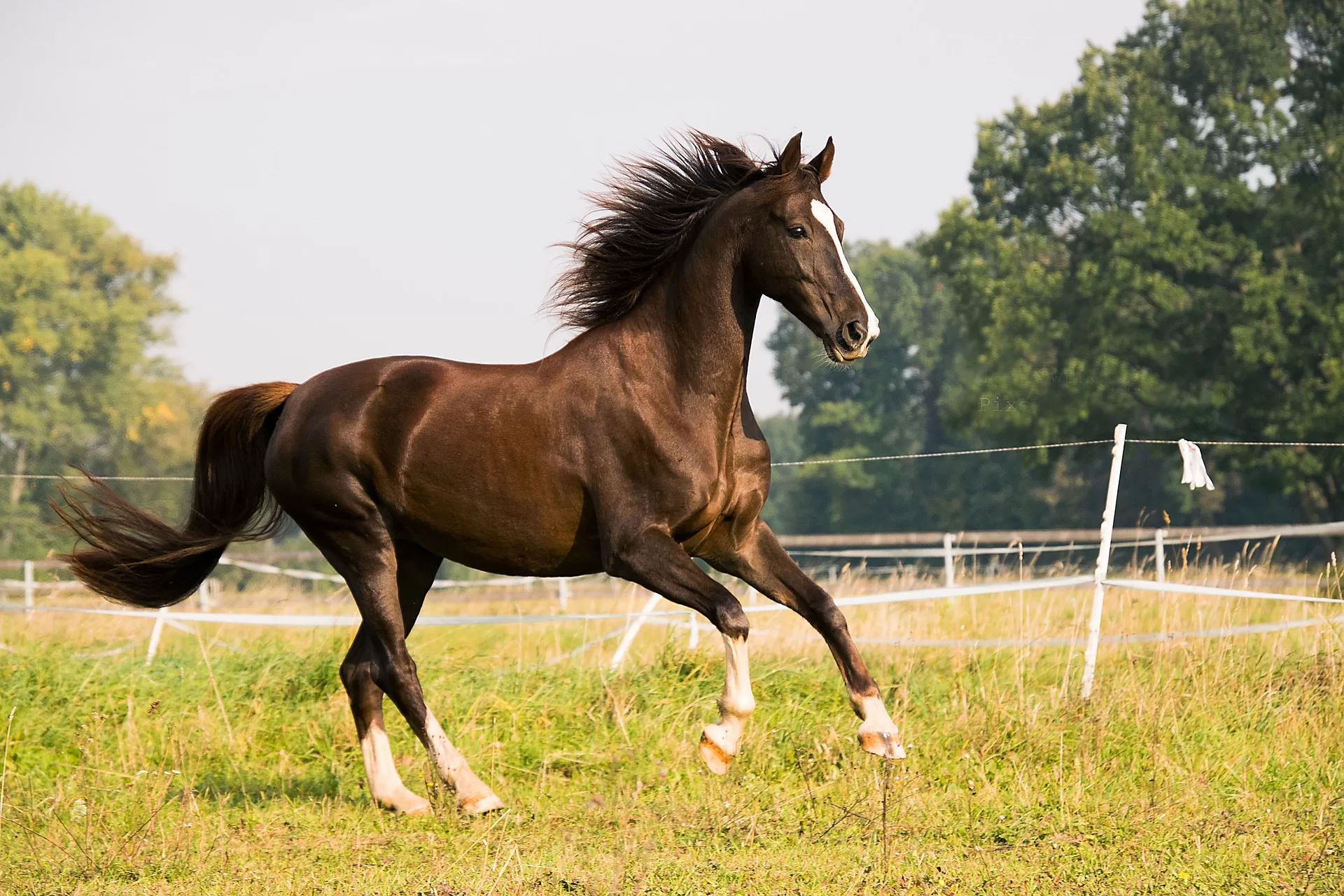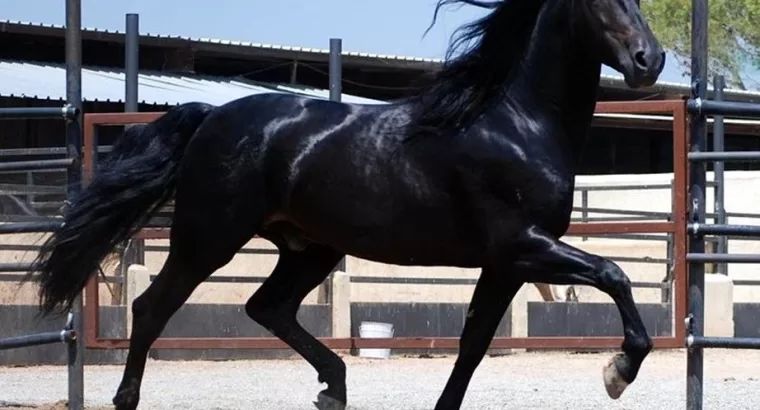Is Your Horse Showing Signs of Problems in its Hind Legs?
As horse owners and enthusiasts, it is essential to closely monitor our equine companions for any signs of discomfort or health issues. One area of concern that often requires attention is the hind legs of a horse.
Hind leg problems can have a significant impact on a horse’s overall well-being and performance.
The pelvic hind limb is another name for the equine hind limb. It’s crucial to be able to effectively examine, diagnose, and manage equine patients when working with horses.
In this detailed post, we will explore common signs that indicate hind leg problems in gaited horses, potential causes, and the importance of prompt veterinary intervention.
Warning Signs of Horse Problems in Hind Legs
- Lameness: Persistent lameness or an irregular gait may indicate an issue in the hind legs. Look out for uneven steps, shortened stride, or difficulty transitioning between gaits.
- Swelling: Swelling in the joints, tendons, or muscles of the hind legs can be a sign of inflammation or injury.
- Stiffness: If your horse shows resistance or difficulty while bending, turning, or performing specific movements, it may be indicative of hind leg issues.
- Decreased Performance: Hind leg Horses problems can significantly impact a horse’s athletic abilities, leading to reduced performance in activities such as jumping, collection, or extended trotting.
- Changes in Behavior: Horses experiencing hind leg discomfort may display behavioral changes, such as irritability, reluctance to be touched or groomed, or difficulty standing for long periods.

Causes of Hind Leg Problems
Arthritis
Degenerative joint disease can affect the hind leg joints, leading to pain, stiffness, and lameness.
The following are the main pathogenic mechanisms:
- Faulty cartilage that collapses under a typical load
- Subchondral and epiphyseal bone microfractures brought on by high mechanical forces
- Microfractures in the cartilage and changes in the chondrocytes are brought on by repeated impact damage.
- Damaged chondrocytes result in inadequate healing, which releases cytokines and causes cartilage to separate, fissure, and lose viscoelasticity.
Stress & Strain
Strains and sprains of the muscles, ligaments, and tendons can occur when your horse is overworked during training. If a horse engages in an activity that requires quick movements or changes speed abruptly, sprains or strains are more likely to happen. A sprain or strain may also be more likely in hooves that are overgrown.
Tendon or Ligament Injuries
Overexertion, improper training, or sudden trauma can cause strains, tears, or inflammation in the tendons or ligaments of the hind legs.
Laminitis
Laminitis can affect the back feet as well, despite the fact that it typically starts in the front feet. When the laminae that hold the coffin bone to the hoof wall aren’t getting enough blood, laminitis develops.
Permanent harm may result if laminitis is not identified and treated as soon as symptoms appear. That’s why proper horse maintenance is very important as it avoid issues such as laminitis.
Bone Disorders
Conditions like osteoarthritis, fractures, or developmental orthopedic diseases can affect the bones in the hind legs.
Hoof Issues
Problems with the hooves, such as imbalances, abscesses, or laminitis, can cause secondary issues in the hind legs.

Importance of Veterinary Intervention
Early detection and appropriate treatment are crucial for managing hind leg problems in horses. Consultation with a qualified veterinarian will help determine the underlying cause and develop an effective treatment plan.
Diagnostic tools like X-rays, ultrasounds, or lameness evaluations may be utilized to pinpoint the issue accurately. Treatment options may include medication, physical therapy, corrective shoeing, or in severe cases, surgical intervention.
Horses Care Guidelines
Proper care is essential to ensure the health and well-being of horses. Here are some key guidelines to follow:
- Nutrition: Provide a balanced diet with access to fresh water, good quality forage, and appropriate concentrates. Consult a veterinarian or equine nutritionist for specific dietary requirements.
- Shelter: Offer a well-ventilated, clean, and secure shelter to protect horses from extreme weather conditions.
- Regular Exercise: Allow horses regular turnout and exercise to maintain their physical and mental well-being.
- Hoof Care: Schedule regular farrier visits for hoof trimming and maintenance to prevent issues like lameness.
- Veterinary Care: Ensure routine vaccinations, deworming, dental exams, and annual health checks.
- Grooming: Regular grooming promotes a healthy coat, skin, and helps detect any abnormalities.
- Socialization: Provide opportunities for social interaction with other compatible horses to support their natural herd instincts.
Prevention and Management
To minimize the risk of hind leg problems, implement proper management practices, such as regular exercise, maintaining appropriate weight, and ensuring a balanced diet.
Regular farrier visits for hoof care are essential, as are periodic veterinary check-ups. Implement a gradual and appropriate training regimen to avoid overexertion and strain on the hind legs.
Imaging The Hind Limb
Veterinarians use diagnostic analgesia (joint blocking) to isolate the source of lameness before selecting an imaging technique. Stallside radiographs (X rays) are the modality of choice for examining any bone or joint in this context because veterinarians spend the majority of their equine work on the farm.
However, radiography does not provide much information regarding soft tissue. In the field, ultrasound is the best tool for assessing tendons, ligaments, or other soft tissue structures.
Advanced imaging procedures could be carried out back at the hospital by your veterinarian. There, he or she can use nuclear scintigraphy to more precisely localize a problem area and MRI or CT to further assess more subtle conditions like navicular bursitis, proximal suspensory ligament desmitis or sesamoidean ligament conditions.
The Bottom Line
The hind legs of a horse play a vital role in its mobility, strength, and overall performance.
Both show horses and domestic horses can develop hind-limb lameness. You have the best odds of detecting and treating the problem under the direction of your veterinarian team whether it be sudden, acute, or sneaky, persistent.
Being vigilant and proactive in monitoring your horse’s hind leg health can help identify issues early on and prevent further complications.
Remember, if you notice any signs of hind leg problems, seek veterinary assistance promptly. By addressing these issues and providing the necessary care, you can help your horse maintain optimal leg function, comfort, and well-being.

